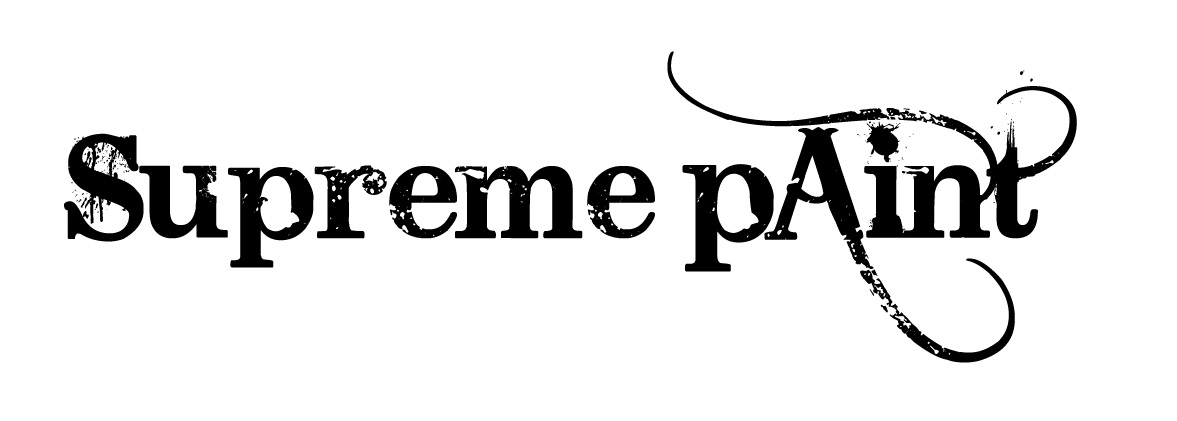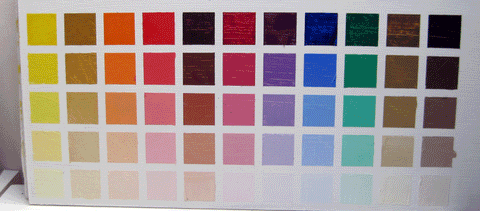'Reality is merely an illusion' – Albert Einstein
Since the beginning of the human race people have wanted to explore the world around them and also understand the matter of which it is made, they have consistently compartmentalized, labelled and broken down nature down into smaller groups and smaller parts in an attempt to find the building blocks of life and matter. To find the root of life and matter through science.
Psychologically this need to organise and name is straight out of the left hemisphere of the brain, the site of the language centres, the ego and our analytical and logical processes. Our creativity and intuition reside in the right hemisphere. To me there is a fascinating area in painting and in perception where the differing outlooks of these two hemispheres of the brain come together.


This phenomenally complicated diagram is illustrating how all the living organisms link together on planet earth and is a perfect example of humans desire to compartmentalize nature, humans are located on the line 'you are here'.
We know oil paint consists of pigment and oil, but what is happening on a deeper level, what is happening when the little packets of light or photons which come through flying through the ether, often from the other side of the universe, strike, crash, and bang into the into tiny particles of pigment suspended in the oil.
Maybe its just me who can visualize being surrounded by this world of intense, constant subatomic activity, but the more I learn about particle physics the more my perception of the world changes. In this pursuit of understanding matter scientists discovered and categorized the element and then the atom and at the time this was thought to be the smallest part of the material world, the word atom comes from atomos meaning' that which can't be split'.
Scientists carried on this journey plunging deeper into subatomic (literally below the atom) physics, with the naming and identifying of the electron, the proton and the neutron, deeper still with quarks and neutrinos and many other subatomic particles and all the while these discoveries are being made they are getting more abstract, harder to define verbally and more out of line with our traditional view of the world.
Particles which can predict the future, particles which travel faster than light and single particles which can be in two places at once, these are all recent, proven, genuine scientific discoveries. Currently it is felt the entire universe is constructed out of a consistent flowing and evolving energy and the particles and the building blocks of matter are a man made diversion created out of the desire to split and label.
This means as a person you are constructed at the most basic, deepest level of the same energy which the stars are made of, the person who is sat opposite you is made of the same energy as you and the air between you and that person is again made of the same energy, giving a vision of total boundless connection. On the deepest level of particle physics the boundaries we take from granted don't really exist, the wall isn't solid it is actually 99.9999999% nothing, interestingly scientists do not know what the nothing is. Maybe the nothing is what we call God, or as called in the Eastern world, Chi or maybe just nothing.
Why has this got anything to do with painting? Because in viewing colour you are witnessing this shift of energies and particles occurring right before your eyes, you are witnessing as clearly as is humanly possible quantum physics in action, before it goes submicroscopic, mathematic and abstract. Your ability to view colour is governed solely by the interaction of these subatomic particles.

This is a photo from a cloud chamber, this is the only way we can see visually what the various subatomic particles are doing the swirls are when a particle collides with another then it spirals off 'out of control', this all happened at the speed of light and is occurring trillions of times inside you and around you right now.
This flow of electromagnetic energy, the photons of visible light by chance interact with the surface of the pigment, some of these photons are absorbed and changed into different subatomic particles and some of them are bounced back and reflected into our retinas and converted by electrical impulses in our visual cortex into a thought which somewhere in our conciousness gives the illusion of colour. At the same time alongside the scientific flow of energy and stimulus you have a right brain hemisphere triggering of feelings and intuition beyond words and reason. When you are looking at colour the two hemispheres of the brain are operating nearly in unison, science and feeling meet.
To illustrate the right brain reaction, imagine looking at beautiful sunset when it goes beyond words and reason into something else, this is where painting is at its most powerful, describing scenarios where words fail and generating deep instinctive sensations which we can't describe. Van Gogh, Rembrandt, Francis Bacon they all understood this, that is why their work is popular because it connects on a very deep instinctive level, they managed to capture the 99.9999999% of nothing.
As an aside I recently listened to an interview with a brain surgeon, he had been practising for around 40 years, and he still could not understand on any level how conciousness could exist in the lump of jelly he spent most his time poking around in.
I love where the boundary where of the world of science collides with the feeling, intuitive, artistic part of our world, and I think they are getting closer and closer all the while, we live in an interesting time.

Vincent Van Gogh sketch of a Mulberry tree
It is the physical, scientific aspect of the interaction between light and pigments which I am now going to look at. Our best attempt at classifying or defining colour is the spectrophotometer this gives highly accurate readings of the light being reflected back from a sample, however mostly this information is of little use to the painter it does not tell us how opaque the paint is, it's tinting strength or many other physical qualities which the painter needs to feel and judge subjectively.
Nearly all pigments are crystalline in structure, and it is this structure which dictates the colour, the slightest variations to this microscopic form will change that colour, changing the amounts of light wavelengths absorbed and the amounts reflected.
The cadmium range of colours are made from cadmium sulfide and to get the large array of cadmium colours the artist has available, the sulphur element is replaced with increasing amounts of selenium, which basically changes the structure of the crystals giving different levels of absorption of light and therefore different colours, cadmium pigments can be taken from vivid yellow to black all from essentially the same material.
The transparency or opaqueness of a colour is down to the pigments ability to scatter light, there are two factors involved, the pigment particle's size and it's refractive index. Refractive index is a measure of how much light bends as it travels through a substance, the bigger the difference between these two qualities the more light is scattered, and the more opaque a pigment appears to be. This is much the same as driving through fog with your headlights on and the light does not go 'forward' as usual but is spread out and scattered by the water droplets.
This is interesting when you think of an opaque paint which will cover other paints, it is not thicker or completely covering the paint below, it just scattering the light to such an extent no light reaches below in order for us to register a different colour, our eyes are deceiving us.

An extremely close up photo of a Rembrandt painting, showing the complexities of opaque and transparent layers, and the genius of the man.
Generally as the pigment particle gets smaller, the paint gets more opaque and has a higher tinting strength, however there is a point in decreasing particle size where the paint starts to become transparent but carries on increasing in tinting strength, this can be seen in one of the most fundamental pigments to painting, the iron oxides. It can also be seen in Titanium white one of the most opaque paints available, it is made from Titanium Dioxide and a one centimetre wide crystal of Titanium Dioxide is completely transparent, as it is ground down it becomes completely opaque, if it were to carry on being ground to an even smaller size the paint would become transparent again.
A lot of the nuances and subtleties of paint come from the impurities within them giving us masstone and undertone, this is where a thick layer of paint exhibits a different colour to a thin layer, I love this complexity and the fact that it comes from an 'impefection' of nature.
If you have a sample of paint with 990 crystalline particles of a yellow ochre iron oxide and it has 10 particles of natural silica within it, unbelievably our brains can interpret this microscopic difference in terms of colour perception, obviously we can't see the microscopic particles and count them, but we see the overall effect is different because of them, we can see them but we can't see them!
As an aside when you start to look into perception it is fascinating, the brain is constantly editing what we see, judging what is the most important and ignoring a lot of peripheral information, mainly because there is too much information to process. It also jumps to visual conclusions, it is faster for the brain to process information this way. If you look at an orange and you see a round and orange object, then the brain concludes it is an orange without looking at the details this works most of the time but not always. I feel knowledge of these perceptual processes helps to remind us not to stop looking carefully, and not take from granted what we see, which is particularly important as an artist.
I have tried in a roundabout way to explain what is happening with your paint at a level normally we do not consider, it becomes even more amazing the deeper you go but I will have to leave that for another post...









































